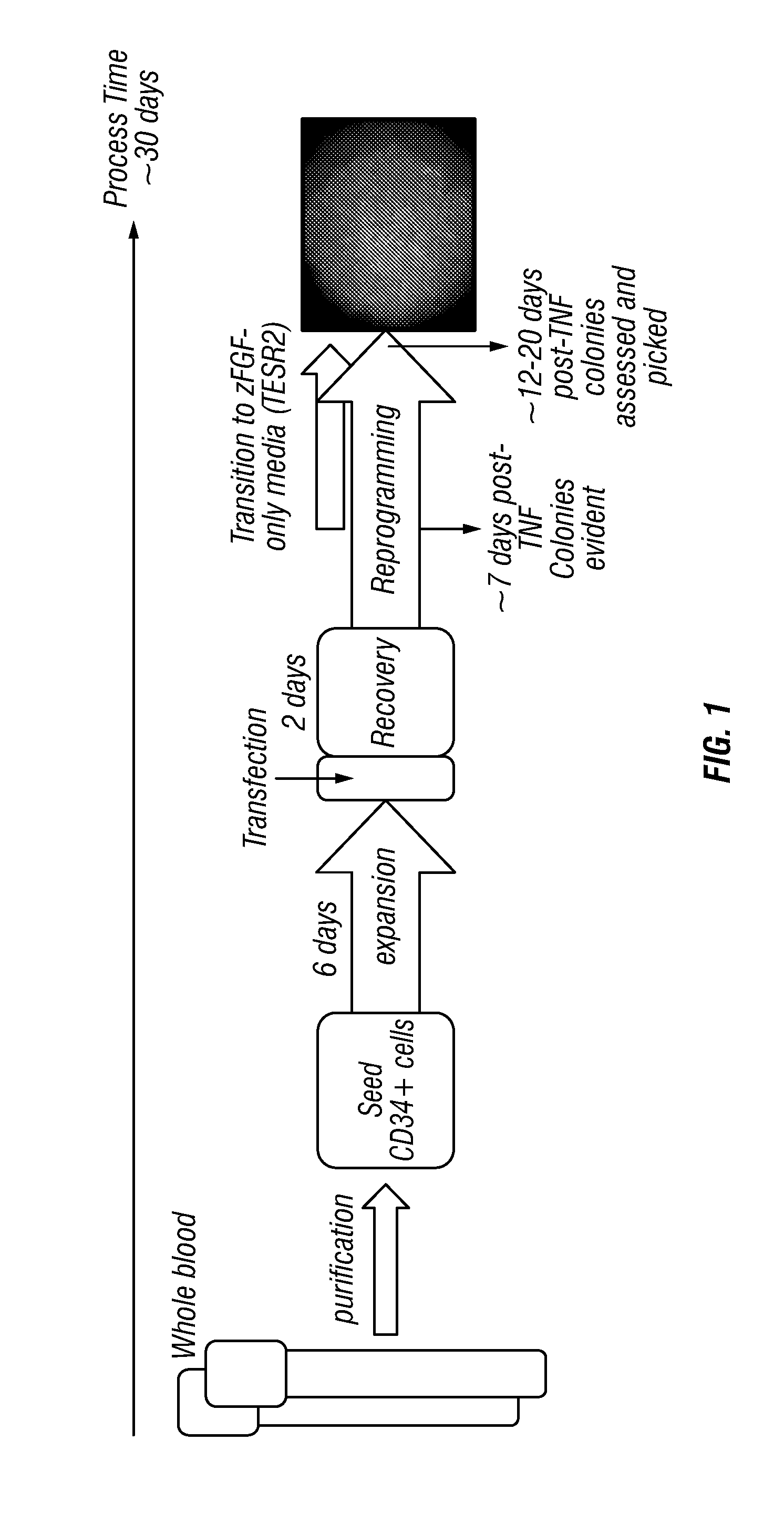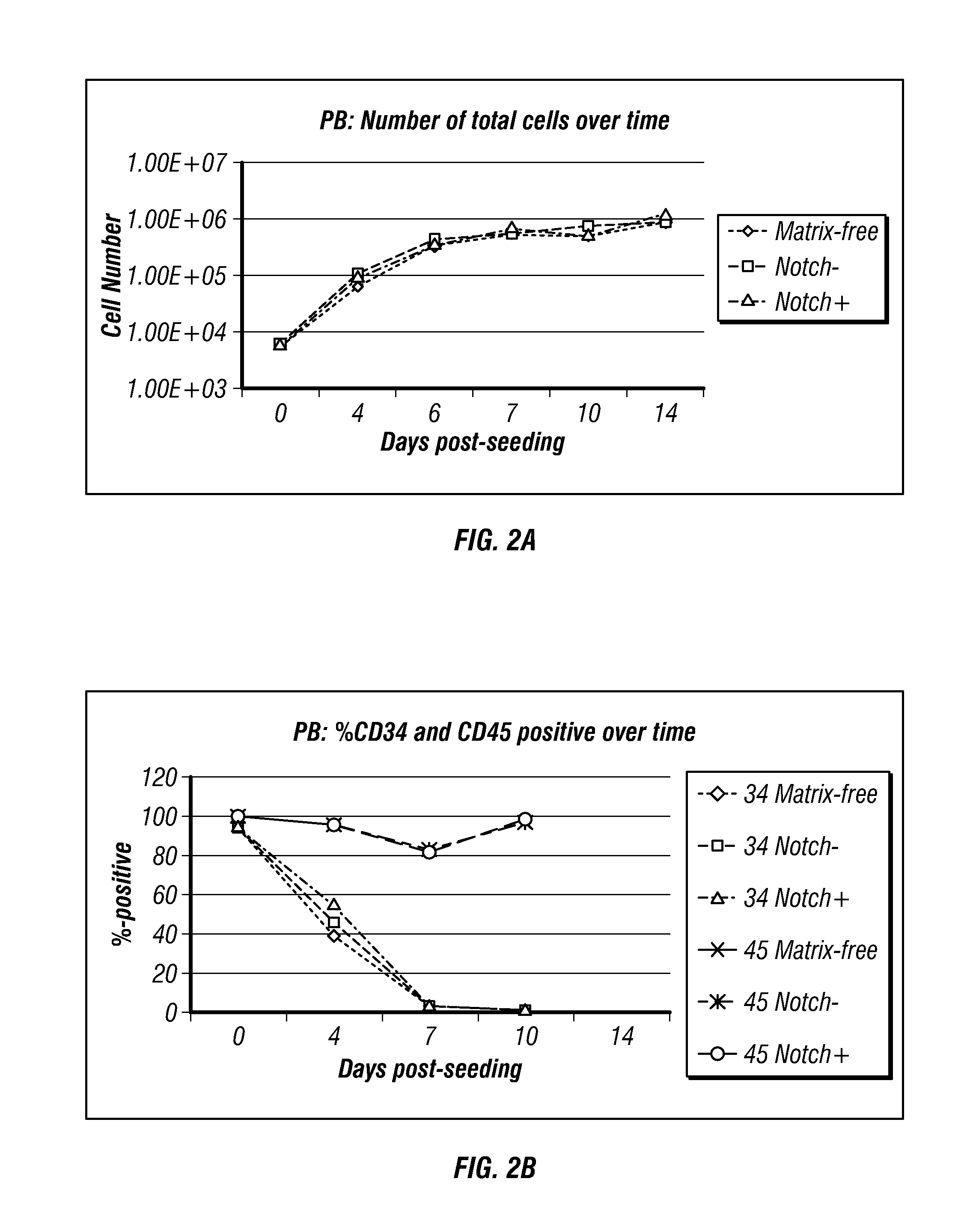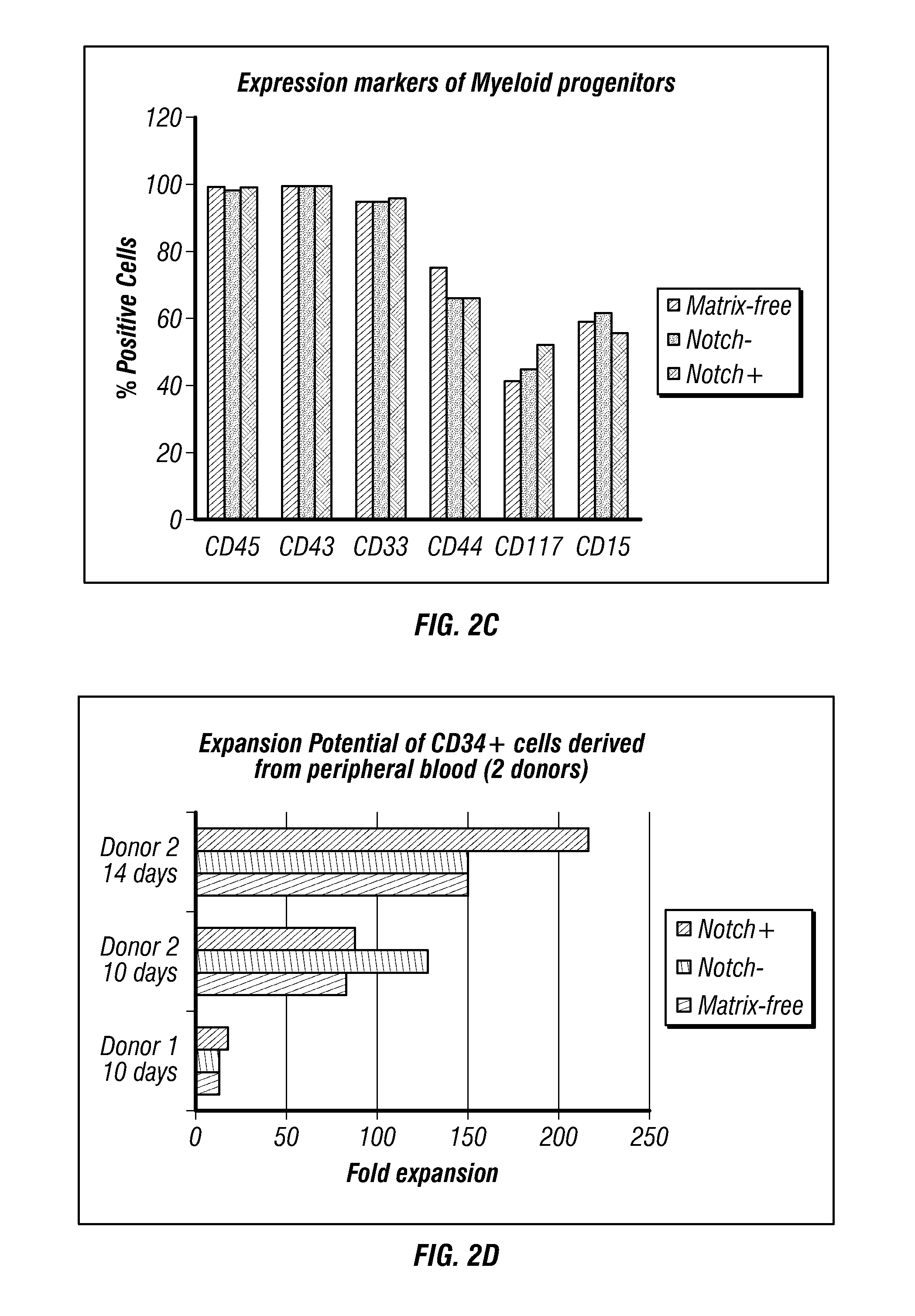Generation of induced pluripotent stem cells from small volumes of peripheral blood
a technology of peripheral blood and stem cells, applied in the field of molecular biology and stem cells, can solve the problems of difficult control and quantifying variability, hampered thorough assessment of clinical relevance of ips cells, and inability to carry out dna carrying expression cassettes encoding known oncogenes such as c-myc and t-antigen, so as to reduce the volume of input blood volume, improve the overall process efficiency, and be less susceptible to reprogramming
- Summary
- Abstract
- Description
- Claims
- Application Information
AI Technical Summary
Benefits of technology
Problems solved by technology
Method used
Image
Examples
example 1
Generation of iPS Cells from Hematopoietic Progenitor Cells
[0288]As illustrated in FIG. 1, normal, non-mobilized peripheral blood from patients was processed to collect PBMCs and purified to enrich for cells expressing CD34. Those cells were then seeded to allow for expansion and transfected within approximately 1 week of seeding. They were then allowed a one day post-transfection incubation period followed by a recovery period of approximately 1-2 days and transitioned to 100% reprogramming medium. As cells attached and loose colonies became evident, the medium was gradually transitioned to TESR2 to support the formation of iPS cells.
[0289]Human whole blood was collected in vacutainers (range of volumes to be included here from 1-50 ml)
[0290]PBMCs were separated from human whole blood and either frozen or immediately processed to isolate CD34 cells.
[0291]Antibodies directed against CD34 were applied to PBMCs processed from peripheral blood and separated manually or automatically.
[0...
example 2
Optimization of Generation of iPS Cells from Hematopoietic Progenitor Cells Using Polycistronic Reprogramming Vectors
[0304]Schematic maps of OriP-based reprogramming plasmids containing polycistronic messages are shown in FIG. 4 (Combination Set 1 and Set 2). Purified cells from PBMCs were expanded for 3 or 6 days. A range of input cell numbers were transfected with a control, oriP / EBNA1-based plasmid expressing GFP. The 3 and 6 day expanded PBMCs from donor GG were transfected with the reprogramming plasmids as described above.
[0305]The transfection efficiency of lower numbers of CD34-enriched cells derived from PBMCs collected by leukophoresis was assessed by calculating the percentage of viable cells expressing GFP detected by flow cytometry. Viability was also determined by identifying the fraction of trypan blue-negative cells the day after transfection divided by the total number of input cells and was approximately 30% within a range of 1×104 to 1×105 input cells (data not sh...
PUM
| Property | Measurement | Unit |
|---|---|---|
| volume | aaaaa | aaaaa |
| volume | aaaaa | aaaaa |
| volume | aaaaa | aaaaa |
Abstract
Description
Claims
Application Information
 Login to View More
Login to View More - R&D
- Intellectual Property
- Life Sciences
- Materials
- Tech Scout
- Unparalleled Data Quality
- Higher Quality Content
- 60% Fewer Hallucinations
Browse by: Latest US Patents, China's latest patents, Technical Efficacy Thesaurus, Application Domain, Technology Topic, Popular Technical Reports.
© 2025 PatSnap. All rights reserved.Legal|Privacy policy|Modern Slavery Act Transparency Statement|Sitemap|About US| Contact US: help@patsnap.com



